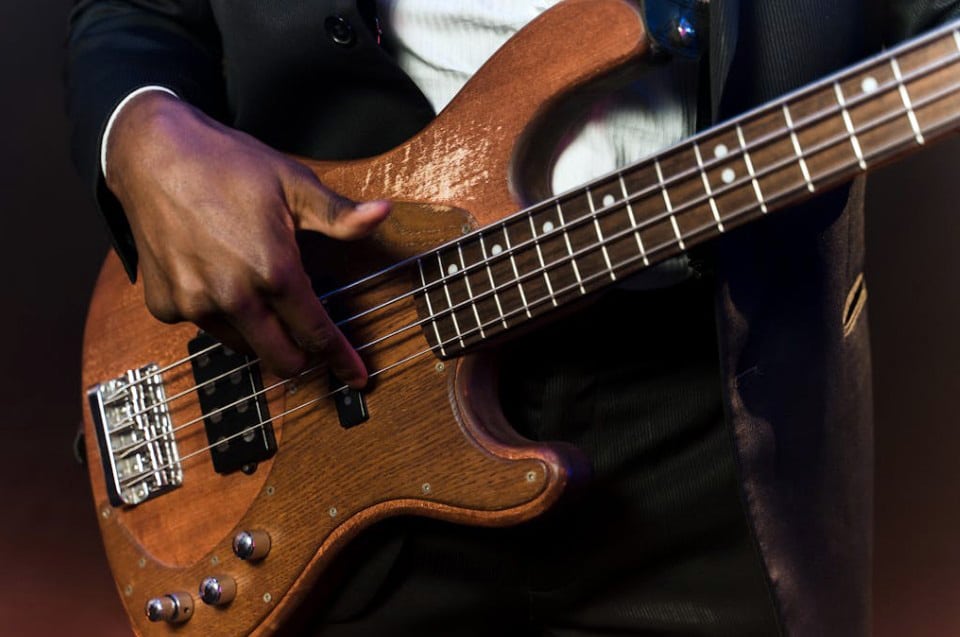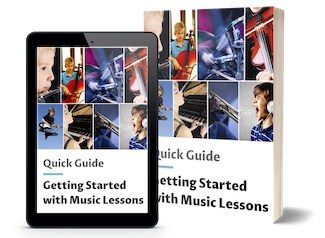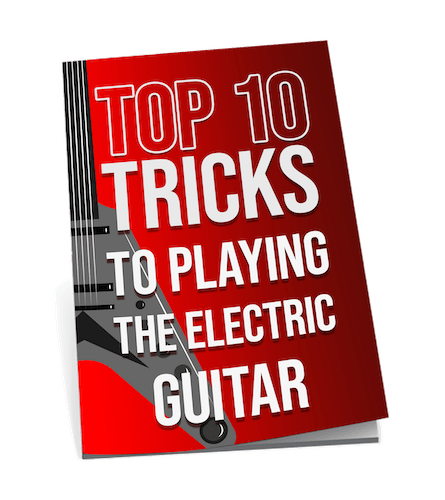Best Overall
Capo
-
Overall: 10/10
-
Best Feature: Patented Easy-Action Mechanism
-
TedScore™: 10/10
Best Capo for
Live
Performance
-
Overall: 10/10
-
Best Feature: Quick-Change Design
-
TedScore™: 10/10
Best Steel
Strings Capo
-
Overall: 10/10
-
Best Feature: Ideal for exploring music
-
TedScore™: 10/10
When it comes to making music with electric guitars, many guitar players wonder, “Do electric guitars use capos?” Yes, you can use a capo on an electric guitar, adding exciting tones and creative flexibility to your playing.
I remember my first experience using one and how it opened up a whole new world of possibilities for my sound.
Electric guitars, with their narrower necks, make using a capo easier and can help achieve unique sounds and styles. If you’re unsure which capo to use, look for capos designed specifically for electric guitars, like the Guitar Capo Deluxe, to ensure the best fit and performance.
Explore the benefits and techniques of using a capo on your electric guitar, and let’s discover how it can transform your music!
Capos on electric guitars
Using a capo on an electric guitar may not be as common as on acoustics, but it offers unique benefits. I’ll explore how electric guitars can use capos, tips for selecting the right one, and how to utilise different capo positions effectively.
Can Electric Guitars Use Capos?
Absolutely, electric guitars can use capos just like their acoustic cousins. The key advantage of using a capo is to quickly change the key of a song without altering chord shapes. On electric guitars, which often have narrower necks, this can be even easier than on acoustics.
A capo can add creative flair to your playing by enabling new chord voicings and harmonics. I often find it handy for songs that require frequent key changes or for experimenting with new sounds.
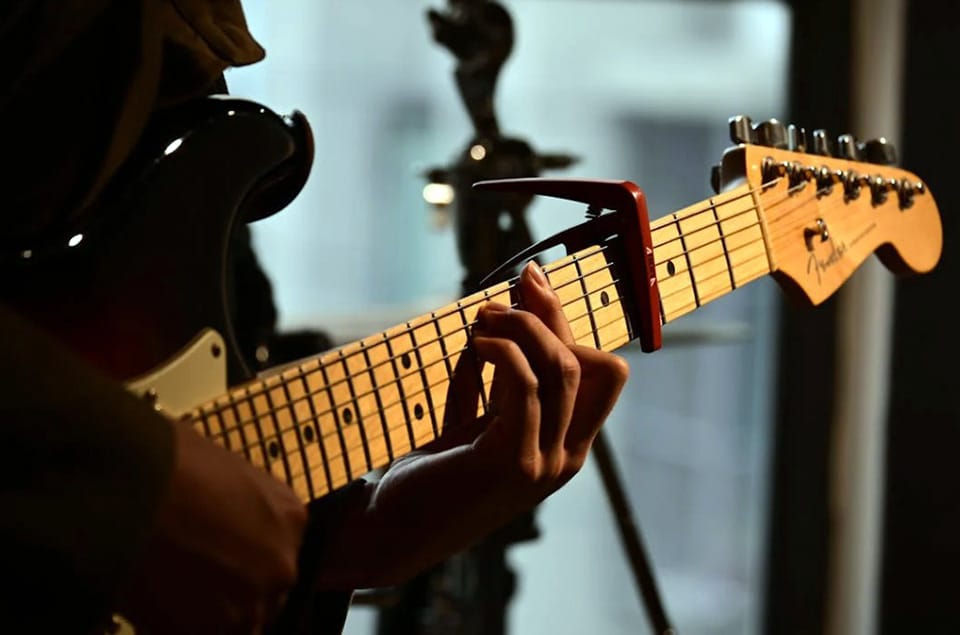
Choosing the Right Capo for Electric Guitar
Selecting the perfect capo for an electric guitar involves considering the type and fit.
Spring or trigger capos, like the Guitar Capo Deluxe and Kyser Quick-Change Capo, are popular due to their ease of use. They allow for quick adjustments and are versatile across various guitars.
Guitar Capo Deluxe by G7th
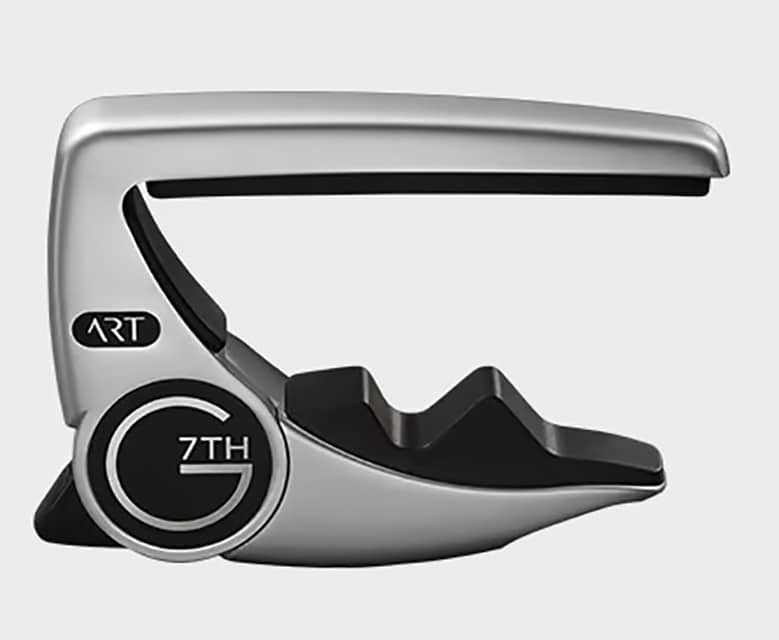
FEATURES: Patented Easy-Action Mechanism
OTHER INFO: Includes an adjustable tension
- The patented easy-action mechanism allows for quick and effortless one-handed operation
- The adjustable tension feature ensures a secure fit on different guitar necks
- Higher Price Point
When you click ‘Check Price’, you’ll see there are loads of great places to buy this item. Our personal favorite is Sweetwater for the US, and Thomann and Gear4Music for the UK & Europe.
They are the largest music retailers, with excellent customer service, competitive prices, really fast shipping, and the longest guarantees.
The professional musician who wrote this article combined many things,
from the product build, manufacturer’s reputation through to feedback
from other users, to create our famous TedScore™.
Kyser Quick-Change Capo
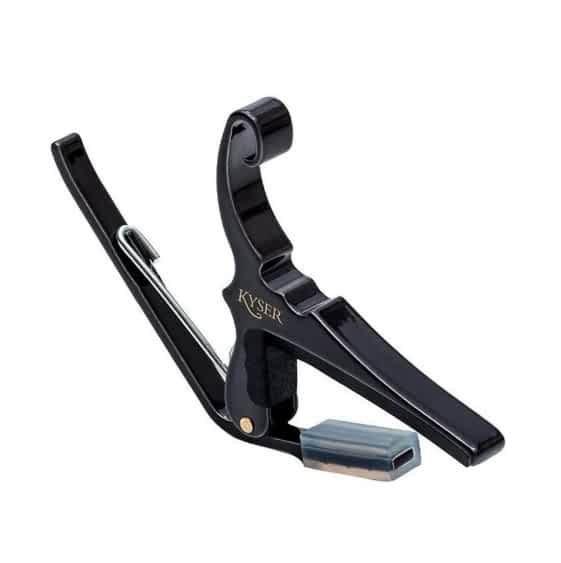
FEATURES: Quick-Change Design
OTHER INFO: Made from high-quality materials
- The quick-change design allows for fast and effortless key changes
- The capo provides a strong grip on the strings without pulling them out of tune
- None
When you click ‘Check Price’, you’ll see there are loads of great places to buy this item. Our personal favorite is Sweetwater for the US, and Thomann and Gear4Music for the UK & Europe.
They are the largest music retailers, with excellent customer service, competitive prices, really fast shipping, and the longest guarantees.
The professional musician who wrote this article combined many things,
from the product build, manufacturer’s reputation through to feedback
from other users, to create our famous TedScore™.
Strap or toggle capos are another option, like the Shubb C-Series Capo, though less common for electrics due to their slightly bulkier design.
Shubb C1 Steel String Guitar Capo, Polished Nickel

PERFECT FOR: steel string guitars
FEATURES: With a classy finish that will look fantastic with practically any guitar finish
OTHER INFO: Has a user-friendly design for seamless performance
- The ideal companion for musical exploration
- With superb Shubb quality for a performance that glides effortlessly
- More costly than competing brands
When you click ‘Check Price’, you’ll see there are loads of great places to buy this item. Our personal favorite is Sweetwater for the US, and Thomann and Gear4Music for the UK & Europe.
They are the largest music retailers, with excellent customer service, competitive prices, really fast shipping, and the longest guarantees.
The professional musician who wrote this article combined many things,
from the product build, manufacturer’s reputation through to feedback
from other users, to create our famous TedScore™.
It’s crucial to ensure that the capo you select places even pressure on the strings, as uneven pressure can affect tuning and tone.
Common Capo Positions and Their Uses
When it comes to placing a capo on the electric guitar, positions greatly influence sound. Placing a capo on the first fret can produce a brighter tone, while moving it up the neck can create entirely new voicings.
For creative purposes, I often use the capo around the fourth or fifth frets. This not only makes it easy to transition to higher keys but also opens up new harmonics. When you’re aiming to replicate specific song tunings, experimenting with positions can yield amazing results.
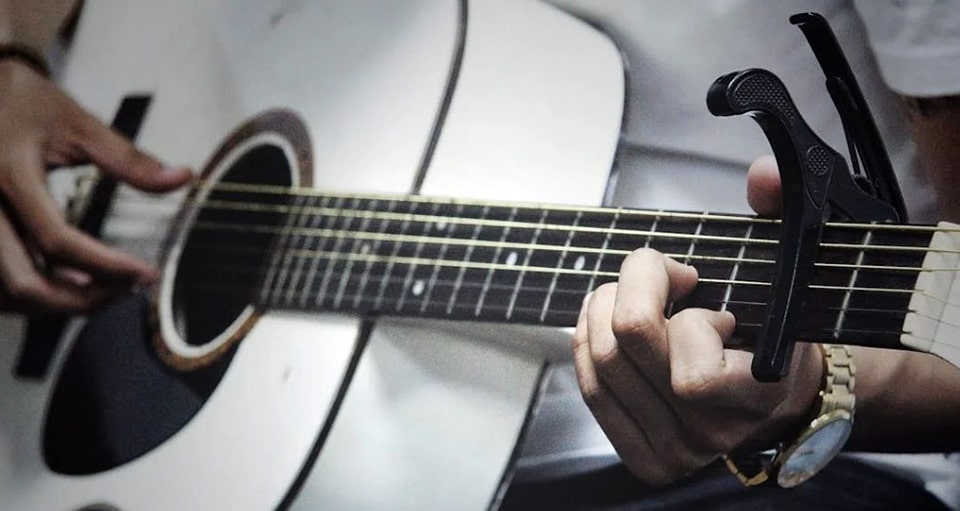
Capo Considerations for Different Guitarist Levels
When selecting a capo, it’s essential to consider your skill level. Beginners might benefit from simplicity and ease of use, while professionals could explore advanced techniques to enrich their music.
Capos for Beginners
Look for a trigger capo because it’s simple to clip on and off the guitar’s neck without fussing over adjustments. These capos are user-friendly, ensuring that you spend more time playing and less time figuring things out.
For those starting on an electric guitar, a capo can help you explore different keys effortlessly.
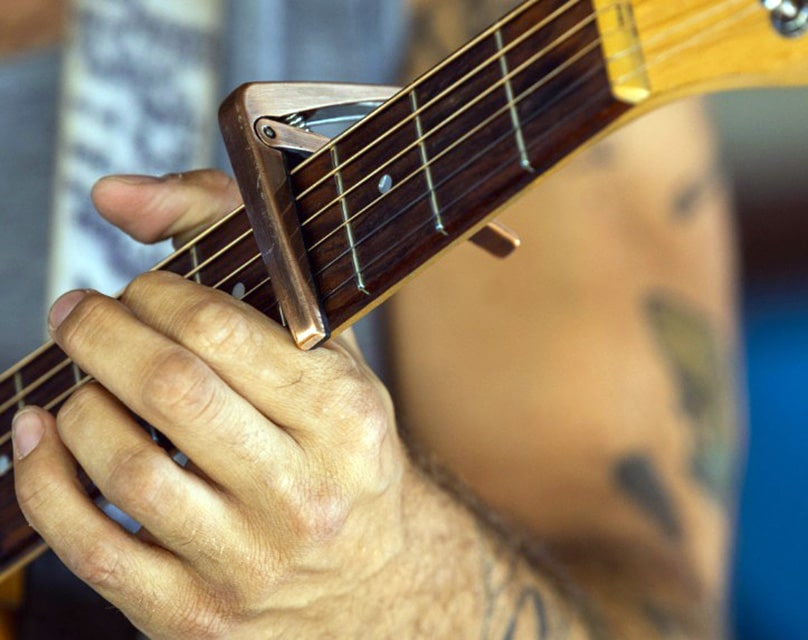
It’s a fantastic tool for learning chords and songs in various keys without losing the open-string sound. Adjusting your capo’s position lets you play more complex pieces with easier chord shapes.
Advanced Techniques for Professional Guitarists
For professional guitarists, capos offer a chance to be creative.
I often use partial capos that cover only some strings to create intriguing chord voicings and unique musical textures. These allow for customized sounds that take a performance to a new level.
A capo’s placement also influences timbre. By moving it closer to the guitar’s body, I can achieve a brighter sound, perfect for solos or intricate fingerpicking.
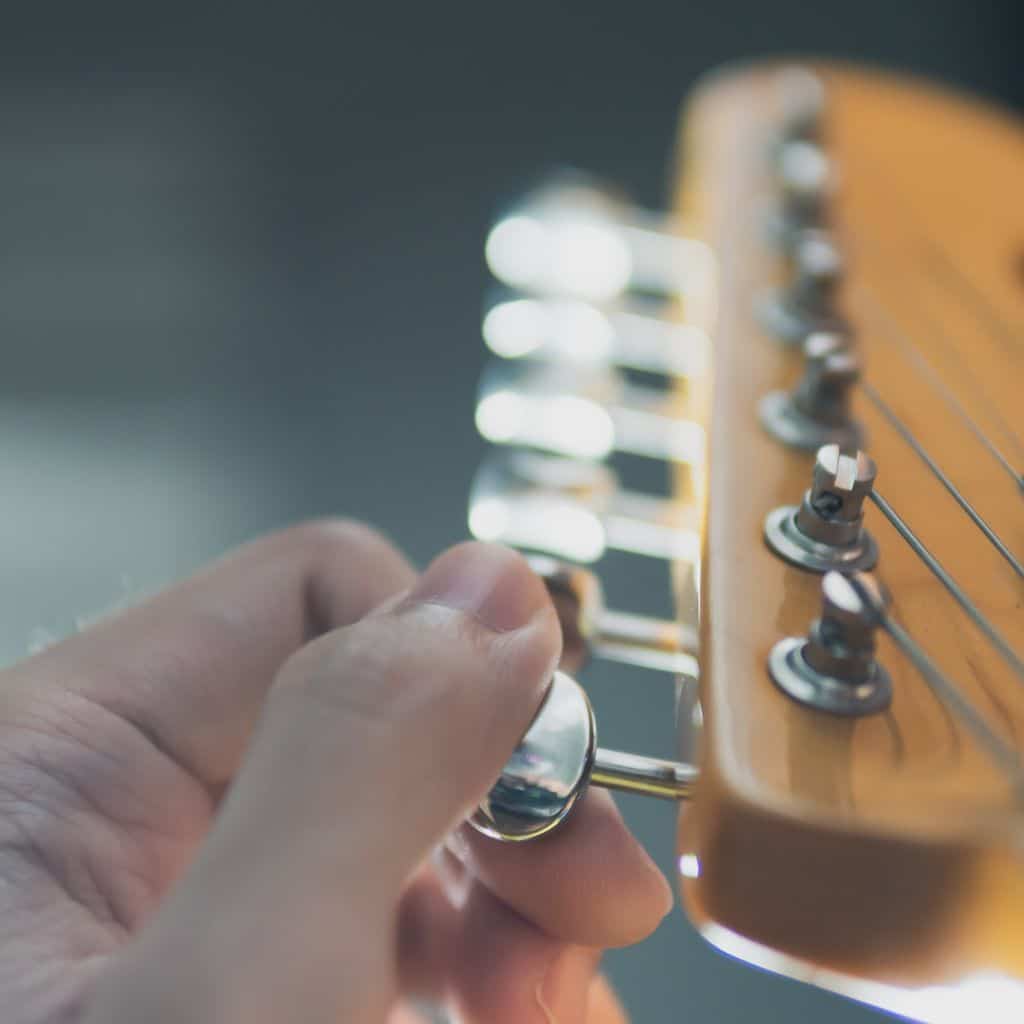
Combining capos with techniques such as alternate tunings opens endless possibilities for rich and evocative music-making.
For electric guitar use, I recommend toggle capos tailored for different neck shapes and string tensions. They provide a firm grip without compromising the guitar’s sound quality. These are excellent for achieving stage-ready precision.
Understanding Capos and Their Role in Guitar Playing
Capos are fascinating tools used by guitarists to shift keys effortlessly. They impact the pitch and sound, and their use varies between acoustic and electric guitars.
What is a capo?
A capo is a small device that clamps onto the guitar neck. By pressing all the strings at a certain fret, the capo essentially acts as a movable nut.
Musicians often use the same capo across various guitar types, including classical guitars, to easily play open chords and fretted notes.
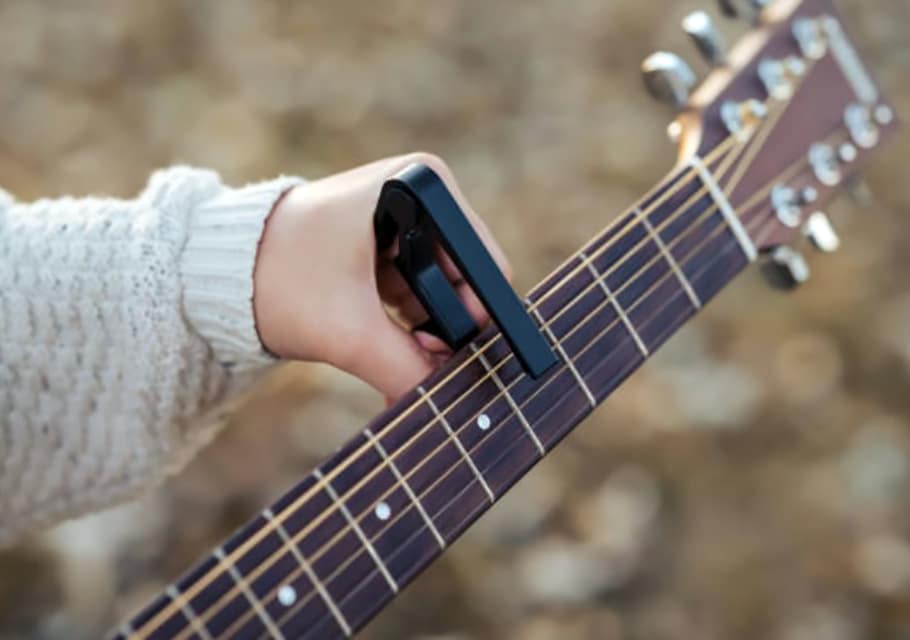
When a capo is applied, it allows players to utilize open strings, which can create a fuller sound and make it easier to play certain chord progressions.
However, string tension and fret wire can vary between electric guitars, which means that some capos may work better than others depending on the instrument. Most electric guitars can accommodate standard capos, but players might also explore different capos, such as partial capo, that allow for unique voicings and tunings.
Using a capo on an electric guitar can enhance creativity and expand a musician’s playing options across all six strings.
The Effect of a Capo on Pitch and Sound
Using a capo changes the pitch by shortening the string length. Placing the capo at different frets raises the pitch, allowing me to experiment with new keys and sounds.
I enjoy how the capo can make a familiar song feel fresh. On electric guitars, the impact on sound may differ due to the lighter strings and amplification.
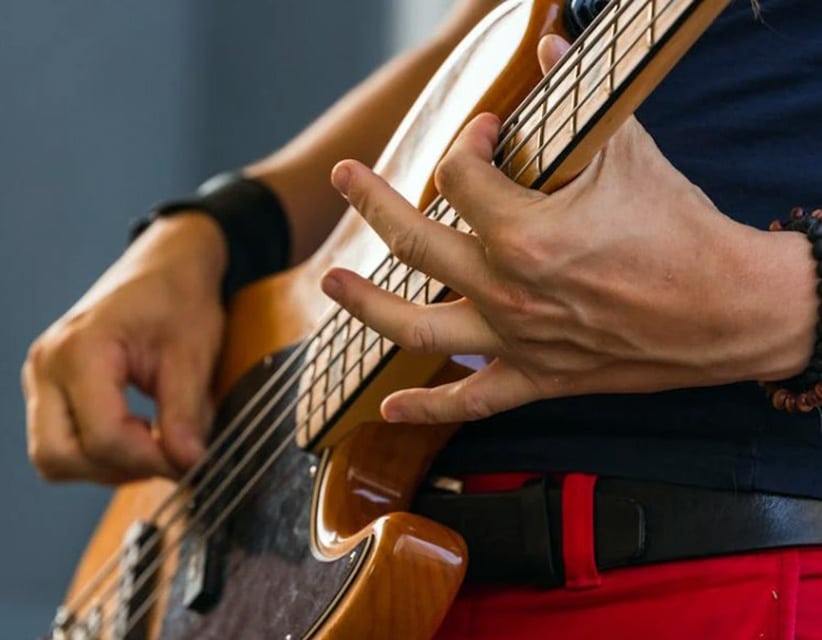
It’s essential to ensure the capo doesn’t throw the guitar out of tune. Selecting a quality capo and adjusting tension can help maintain pitch accuracy.
Comparison Between Electric and Acoustic Guitar Necks
The necks of electric and acoustic guitars have distinct differences.
Electric guitar necks are often narrower and have lighter strings, which influences how a capo interacts with them. For electrics, I find it easier to play barre chords without a capo.
Acoustic necks, being broader, benefit more from the use of a capo, as it can assist in voicing complex chords with less finger strain.
When using a capo on electric guitars, choosing the right fit ensures an even clamp across the neck.
This prevents any unwanted buzzing or pitch issues.
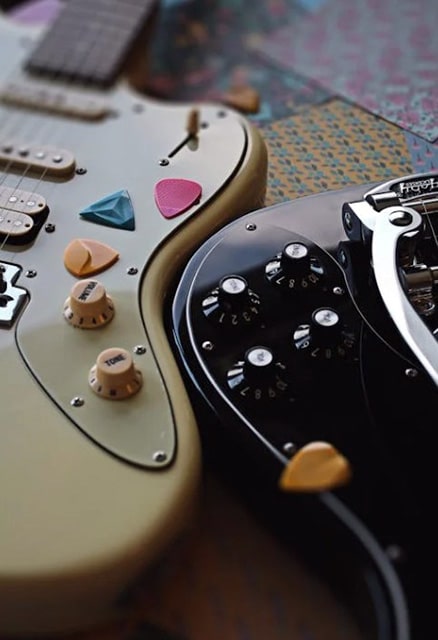
Do Electric Guitar Use Capos
Overview
Using a capo on an electric guitar is a fantastic way to explore fresh musical possibilities. It allows me to experiment with different keys without needing to relearn chord shapes. I can easily match a vocalist’s range or just add some variety to my sound.
Electric guitars generally have narrower necks compared to acoustics. This means capos designed for acoustics may not fit snugly. Luckily, there are versatile capos specifically crafted to suit both electric and acoustic guitars.
A quality capo enhances my playing experience. I’d recommend the Guitar Capo Deluxe, which accommodates both types of guitars. It provides a reliable grip, ensuring my performance stays top-notch, no matter the genre I’m tackling.
Incorporating a capo might challenge some traditionalists. Still, it’s undeniably a useful tool for broadening creative horizons. Whether I’m playing blues, rock, or jazz, it offers versatility that’s hard to beat.
The volume and tone of electrics react differently when using a capo. Adjusting my amplifier settings can help me maintain a balanced sound.
Keeping this in mind, I’m prepared to transform any song into something uniquely captivating with my electric guitar capoed up.
Having a capo in my arsenal is akin to possessing a hidden weapon. It effortlessly bridges the gap between different styles and sounds, making me a more versatile musician.
Keep reading…
If you’re looking to find the perfect capo for your electric guitar, this article on “What Is The Best Guitar Capo For Electric Guitar?” provides valuable insights and recommendations to help you make an informed choice!
FAQ's
Yes, there are capos specifically designed for electric guitars, which can accommodate the different neck profiles and string gauges typical of electric instruments.
A capo is less commonly used on electric guitars because players often prefer to use techniques like bending and sliding for expressive playing, and the tonal characteristics of electric guitars can be effectively achieved without altering the key as frequently as with acoustic guitars
Yes, electric guitar capos can differ from acoustic ones in terms of design and tension requirements, as they may need to accommodate the narrower necks and different string gauges typical of electric guitars
Yes, many real musicians use capos as a practical tool to facilitate key changes, enhance their playing versatility, and achieve specific sounds in their performances.


